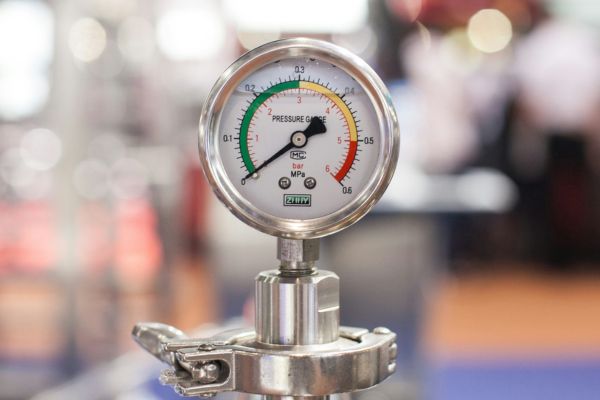The importance of diversification in portfolio construction has been well known for many decades and was first formulated in the development of Modern Portfolio Theory (MPT) by Harry Markowitz in the 1950s. Investors naturally seek assets with high returns and low volatility. It is almost as obvious that spreading the portfolio across relatively uncorrelated assets helps reduce overall volatility without necessarily impacting returns. This article follows on from the first look at the introduction on the subject published here.
Modern Portfolio Theory was the first to properly formulate portfolio concepts and came up with the rather surprising notion that in fact there is a single “optimal portfolio” combination of assets to achieve this. Given that investors have different risk appetites they simply allocate the appropriate proportion into this portfolio and the remainder in a risk-free asset. We can then deduce that in an equilibrium situation this optimal portfolio must approximately equate to the whole market weighted by capitalisation, otherwise if there was somehow a pocket of assets that never made it into the optimal portfolio, prices would simply adjust until they were there in the right proportion.
Sharpe ratio and how to improve it
Directly following on from the initial principles and findings of Modern Portfolio Theory was the devising of the “Sharpe Ratio”. This statistic calculates the risk adjusted expected return of an asset. This in turn is a key determinant of whether the asset is likely to make it into any optimal portfolio.
It is widely accepted now that Modern Portfolio Theory has two main drawbacks - the way it measures risk and its concentration on assets with symmetrical (normal) returns. Investments, technology and techniques have all moved on since MPT was originally introduced and there are many approaches in use today.
Using volatility as a measure of risk is the simplest metric for portfolio analysis and mathematically it combines well with the symmetric return assumption. However, investors think in terms of losses rather than volatility, for the simple reason that it is actual losses that cause damage to a portfolio. Regulators take the same line, for example the UK’s FCA devised its “capacity for loss” test ten years ago as a key requirement for assessing suitability of investments.
Sortino: the smarter kid on the block
Academically this was addressed rather later than MPT and the Sharpe Ratio, with the advent of the Sortino Ratio which was devised in the early 1980s. This ratio calculates the difference between the portfolio expected return and a target return, relative to a downside standard deviation which only counts results below the target return. It is this notion of a “target return” sometimes also known as the “minimum acceptable return” which introduces the idea of avoidance of loss. Investors are looking for returns in excess of the target and constrain this by dividing by the magnitude and frequency of losses below the target. The most obvious value for the target return is zero, particularly in a low-rate environment.
It is true to say that even today, the Sharpe ratio remains the more commonly used measure and it is rather surprising that the Sortino ratio has not gained greater traction. In addition to focussing on downside deviations the other advantage of the Sortino ratio is that it introduces a simple way to incorporate the target return into the measure of risk. This extremely elegant idea gives the Sortino ratio an extra degree of freedom which makes it so powerful.
By way of example, consider a simple hypothetical portfolio containing three assets of volatility 10%, 20% and 30% (with expected returns of 5.5%, 9.5%, 13% p.a. respectively) in a risk-free environment of 1% p.a. shows the following results:
Practical examples
| Weightings | |||
| Portfolio choice to maximise | 10% asset | 20% asset | 30% asset |
| Sharpe ratio | 0.578 | 0.217 | 0.205 |
| Sortino ratio (target return = risk free) | 0.562 | 0.201 | 0.237 |
| Sortino ratio (target return = zero) | 0.656 | 0.148 | 0.195 |
The optimal portfolio to maximise the Sharpe ratio is given in the first row. We can see that the optimal portfolio to maximise the Sortino ratio when the target return (second row) is equal to the risk free is quite close to that which maximises the Sharpe ratio. When the target return is made more conservative the optimal portfolio to maximise the Sortino ratio as given by the bottom row has significantly increased the proportion of the lowest volatility asset. This makes intuitive sense to address to help eliminate losses.
Life is not linear – what about options?
By only measuring asset volatility, MPT and the Sharpe ratio implicitly ignore the fact that asset distributions can be asymmetric. While “primary” assets such as stocks, bonds and currencies reasonably follow the symmetric assumption, its limitation is that it makes it harder to include non linear instruments such as options and structured products.
Option markets have long been very liquid for many stocks, indices and ETFs. This opens up an extra dimension to extend a universe of primary assets to include these options. When you consider a task such as portfolio optimisation, extending the universe can only lead to allowing more possibilities and therefore a more efficient portfolio.
The use of options is more helpful to improve the Sortino ratio because of the ability to focus on losses by buying appropriate protection. This can be seen in the table below. By including options the Sortino ratio can be significantly improved, whereas there is only limited pick-up for the Sharpe ratio. Note that Sortino ratios are in general much higher for any portolio because the denominator volatility measure is much lower and therefore the levels of Sharpe and Sortino ratios are not comparable.
| Best Sharpe ratio | Best Sortino ratio | |
| Assets only | 0.548 | 1.567 |
| Asset plus options | 0.56 | 1.761 |
Other properties of options and structured products also make them compelling choices to improve a portfolio.
Future developments
Options give exposure to volatility and the market generally prices volatility higher than long term realised values. This means that it is possible to buy some protection but also get paid for the risk premium. This is the strategy that is employed by Auto-calls and related product types and is borne out by their popularity and historical performances in most market cycles. Options and Structured products also have exposure to other factors such as dividend yields and correlations which give possibilities for further enhanced return.
The use of calls and puts is enough to demonstrate that options improve portfolio metrics as shown in the hypothetical portfolio above. However, this technique can be extended further by the use of structured products such as defensive Auto-calls and dual directional notes. Both these product types take the return profile further away from the direct performance of the underlying asset to which they are linked. This has the effect of reducing the apparent correlation of the product return with the underlying. This does not magically create low correlation assets but inclusion of such instruments is likely to be useful in many cases to reduce overall portfolio risk.
The theory and practice around efficient portfolio management undoubtedly has a long way to go. The inclusion of options, structured products and other risk reducing instruments for retail investors will help to mainstream such ideas in the years ahead.
Tags: Stress testingA version of this article has also appeared on www.structuredretailproducts.com
Image courtesy of: Ricardo Gomez Angel / unsplash.com














